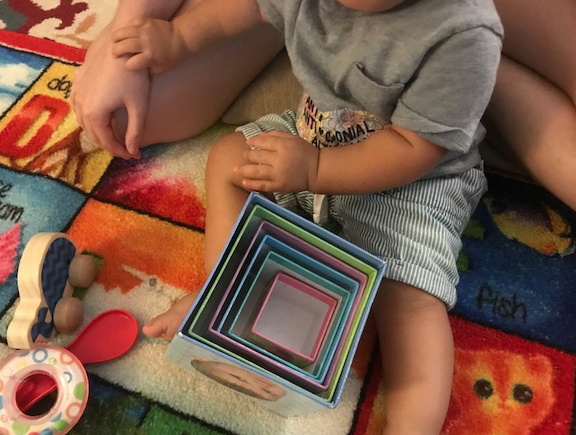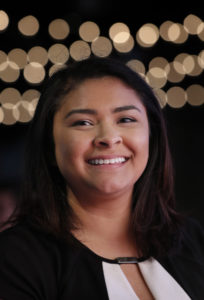Bridging the gap: How race plays into parenting

EDITOR’S NOTE: Names in the following story have been changed.
Noelle C. sat on a colorful alphabet-patterned carpet with her 10-month-old daughter, Stella playing next to her. Stella giggled as her mother handed her a block with different colors of the rainbow. The 20-year-old student at the University of Texas at San Antonio is raising Stella as a single mother. Parenting alone is difficult enough, but another factor influences the way she parents: Noelle is white, Stella is Latina.
One in every seven babies born in 2015 were multiracial, according to the Pew Research Center. Out of all the multiracial babies born that year, 42 percent had one Hispanic parent and one white parent.
Noelle tries to bridge two cultures: her daughter’s and her own. As an infant, Noelle went to protests with her mother. There’s an old picture of Noelle sleeping in a red stroller holding a sign opposing San Antonio’s local rodeo. She’s carrying on the tradition by taking Stella to human rights protests around the city. On Facebook, there are pictures of Stella on a blanket at rallies and marches in favor of immigration reform.
Noelle, who asked to be identified by her middle name to protect the identity of her daughter, is trying to learn Spanish. She’s trying to learn about Latino history.
“You have to consider [Stella’s] culture and the issues that she faces because she’s not white,” Noelle said.“There’s a bunch of things you wouldn’t have to consider if she was white… we’ve gotten stopped by a lady who went on and on about how beautiful her skin is. Usually, it’s white people who are the ones who comment on how beautiful her skin is.”
Another time, a stranger at Walmart noticed her daughter wasn’t white and asked Noelle about the father’s ethnicity. The young mother uses books such as My Shapes, Mis Formas by Rebecca Emberly and How Do I Feel, Como Me Siento by Pamela Zagarenski, as well as toy blocks with words in Spanish to nurture her daughter’s Hispanic heritage.
“I don’t think I’m trying too hard,” says Noelle. “I’m thinking of things you have to consider.”
A 2015 Pew Research Center survey found that 22 percent of U.S. adults said having multiracial kids is good for society. The majority said they didn’t think multiracial children in society made a difference.
Rebecca Aguilar, a veteran television reporter and founder of a Facebook group called Wise Latinas Linked, has a son who is biracial. She is Latina, though her husband is white.
She said his dual ethnicities didn’t create extra obstacles for her as a mother.
“There have been no challenges at all because he has an open heart and open mind. And why? Because his parents are like that. If I’m a close-minded person, then he’ll be like that.”
Saul Garza, a television reporter for KDFW, said one of his main regrets as a father was not pushing his children to learn Spanish.
“My wife speaks English, the in-laws that lived with us when the kids were growing up spoke English,” Garza said. “It was difficult.”
In the next few years, Noelle wants to put Stella in a bilingual school. Even with all the tools she’s given her daughter, Noelle doesn’t feel it’s her place to talk about a background that isn’t her own. She wants to give her daughter access to spaces that cultivate Stella’s identity. The mother is convinced nothing can substitute having a Latinx parent.
“I can’t take [Hispanic] culture, and pretend that I’m in the culture, then instill it in her,” Noelle said. “It’s has to be more natural than that.”

Daniela Ibarra, a digital and broadcast journalism student at the University of North Texas, used to dream of a national career, working at a big network, roving the country.
But after an internship covering news at the local level, Ibarra realized her passion was telling stories about her community.
Ibarra, a native San Antonian, has worked with local station KSAT 12, her university’s news station and interned at Univision. She serves as the interim president for the University of North Texas NAHJ student chapter, but has greater aspirations: to serve on the national board as a student representative.
Among Ibarra’s many adventures, she once witnessed a bomb threat at The Alamo.